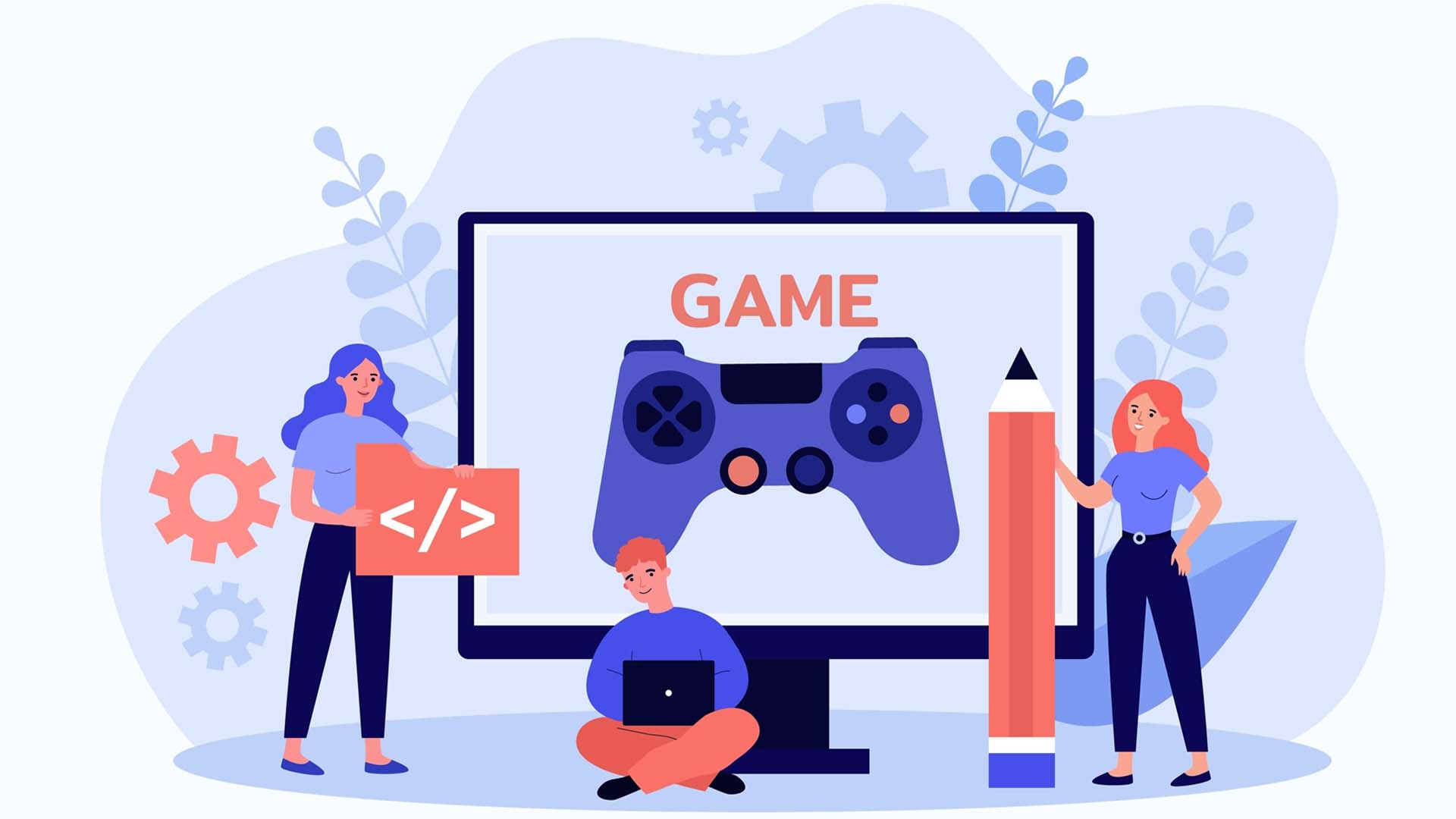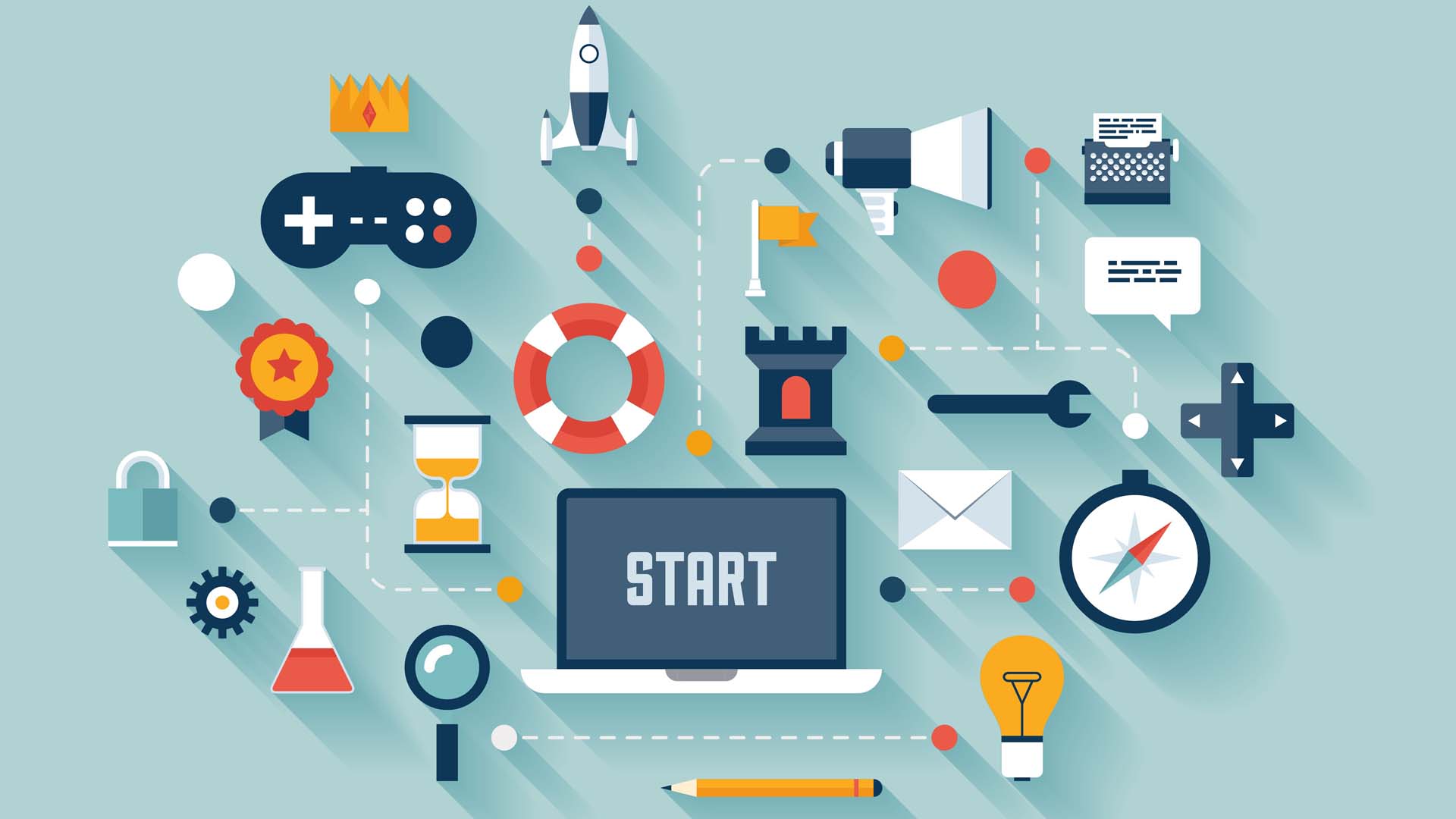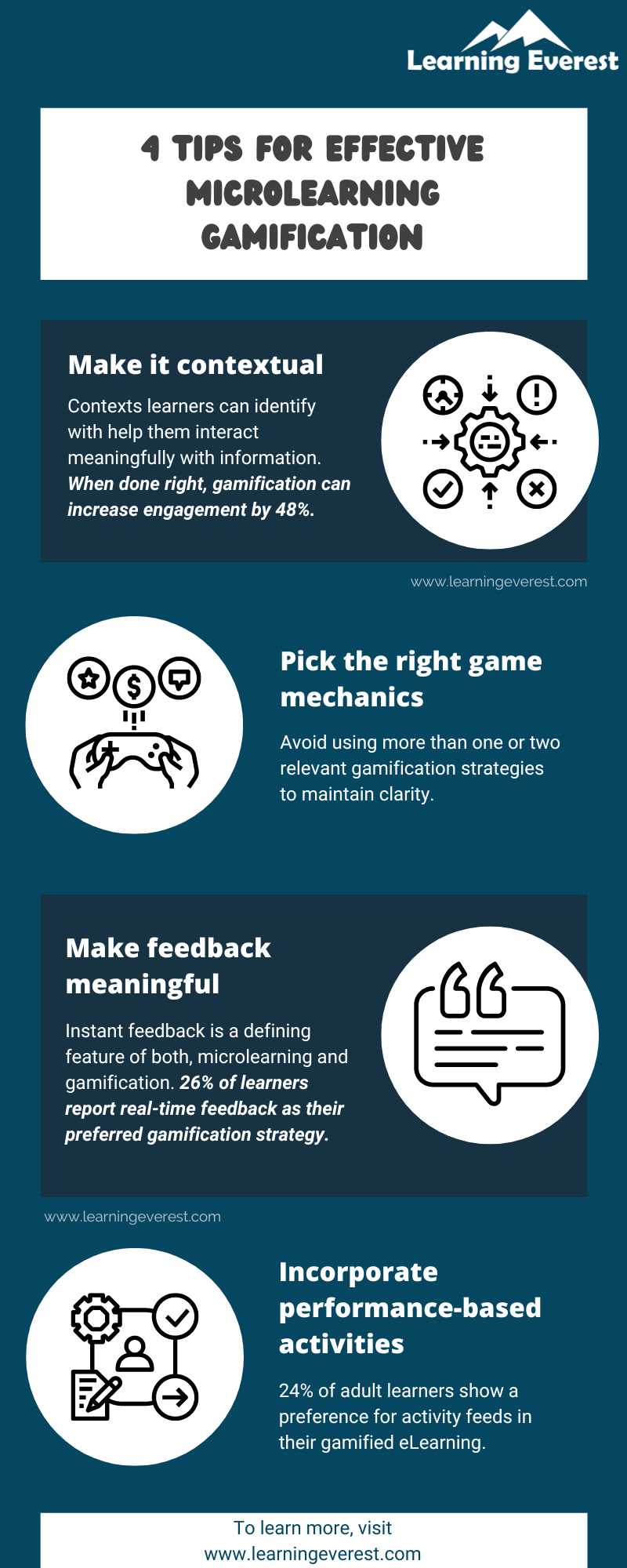Microlearning gamification is an e-learning strategy that combines two of the most engaging learning techniques that exist today. The purpose of this approach is to increase learners’ intrinsic motivation for topics that might potentially lie outside their interest areas. In a gamified microlearning course, game elements such as missions, challenges, and rewards are added to the learning process and delivered in bite-sized chunks. The combination of short, focused, and engaging learning in turn improves learner retention and propels personal and organizational growth. Continue reading to find out 4 tips for building effective microlearning gamification modules.
Table of Contents
Here are four tips for effective microlearning gamification
Tip 1 – Make Gamification Contextual
While gamification is one of the best ways to develop learner engagement, it is also one that can alienate learners quickly if it lacks relevance. To ensure that your microlearning gamification is always relevant, you will need to put extra care into building the right contexts for your learners. Contexts the learners can identify with will help them interact meaningfully with information and apply it to real life.

4 tips for effective microlearning gamification
To make gamification relatable and contextual, you can add the following elements to your course:
- Personalization such as addressing learners by their names or providing a diverse range of avatars to select from
- Relevant narratives that reflect the learners’ unique working circumstances such as their job role, department, common on-the-job procedures and protocol, common challenges faced, etc.
- Multiple learning paths with the help of branching scenarios so learners can explore the course in more than one way
Learning Everest won a Gold Award in the Best Game Category at LearnX 2023
Tip 2 – Pick the Right Game Mechanics
The beauty of game-based learning is that it can take many forms. However, in microlearning gamification, it’s best to stick to a small pool of mechanics.
Once again, the elements you choose should be relevant and add value to the learning experience. The way the gamification occurs should have a flow to it that allows learners to absorb information effectively.
Given that each microlearning module tackles one topic or learning objective at a time, there will often be no need to use more than one or two strategies. Going overboard will hamper the overall clarity of the key points and can cause learners to disengage.

4 tips for effective microlearning gamification
Some gamification techniques to utilize are:
- Narratives that allow the learner to roleplay or identify with the content
- Quizzes with checkpoints and progress markers
- Tiered badges and ratings for different performance levels
- The option to re-attempt sections to make up for rewards
- Instant feedback after each attempt
Tip 3 – Make Feedback Meaningful
Instant feedback is a defining feature of both microlearning and gamification. But the feedback your learners get must also have an impact. Thus, all input must also be meaningful so that learners can draw conclusions from and enhance their learning through the feedback they receive.

4 tips for effective microlearning gamification
Some ways to make feedback meaningful are:
- Explain why a certain response is right or wrong
- Establish a clear connection between the feedback and the situation/problem/question it follows
- Validate and reward learners, even if it is a simple “Good job!”
- End evaluative feedback with constructive pointers and tips and an encouraging message to boost learner morale
- In rare cases, you can even direct learners to external resources or a contact person within the organization for further clarification
Tip 4 – Incorporate Performance-Based Activities Within Gamification in your Corporate Microlearning
The ultimate goal of any kind of learning is results and microlearning gamification is no different. Businesses invest in L&D to fill existing gaps in their workforce and evolve to stay competitive. Thus, gamification should not only build theoretical knowledge but also practical skills.

4 tips for effective microlearning gamification
In microlearning gamification, performance-based learning outcomes can be achieved using the following techniques:
- Simulations
- Roleplays
- Interactive comics and dialogues
- Drag and drop exercises
- Multiple choice questions
- Fill-in-the-blank activities
- Card-sorting exercises
Advantages of Microlearning Gamification
If you are considering adopting microlearning gamification for your training needs, here are some of the benefits of the approach:
- With microlearning, learners have higher motivation to take courses due to their bite-sized duration
- Gamification improves learner attention, motivation, and retention of information
- With microlearning gamification, learners are more engaged and are likely to take lessons during high-attention periods, such as the evening (Goschlberger & Bruck, 2017)
- Learners can continuously revisit and revise courses for just-in-time learning
- Gamified learning facilitates faster processing of information as it allows learners to draw inferences and connect the dots themselves instead of offering the content in a linear and lengthy format.
Infographic
Knowledge Check!
Conclusion
Microlearning gamification is a great tool for driving greater learner engagement in organizations. It can fit many different training areas, can be adjusted according to budget, and can be accessed on many devices, including mobile devices. Thus, microlearning gamification will allow you to reach a larger section of your learners and drive organization-wide change and development. Gamified microlearning, therefore, is a must for organizational success in today’s competitive market.
Frequently Asked Questions (FAQ)
What is gamified microlearning?
Gamified microlearning is an e-learning strategy that combines two engaging techniques: microlearning and gamification. It involves breaking down learning content into bite-sized chunks and adding game elements such as missions, challenges, and rewards to enhance learner engagement, motivation, and retention.
What is microlearning method?
Microlearning is a learning method that delivers content in short, focused, and easily digestible chunks. It aims to provide learners with information or skills in small, manageable segments, making it easier for them to grasp and retain knowledge.
What is the gamification method of learning?
The gamification method of learning involves incorporating game-like elements, such as points, rewards, challenges, and competitions, into the learning process. It is designed to make learning more engaging and motivating by tapping into the principles of game design and applying them to educational content.
How can I make microlearning gamification more relevant to my learners?
To make microlearning gamification more relevant, you can personalize the experience, incorporate relevant narratives related to learners’ working circumstances, and offer multiple learning paths through branching scenarios.






